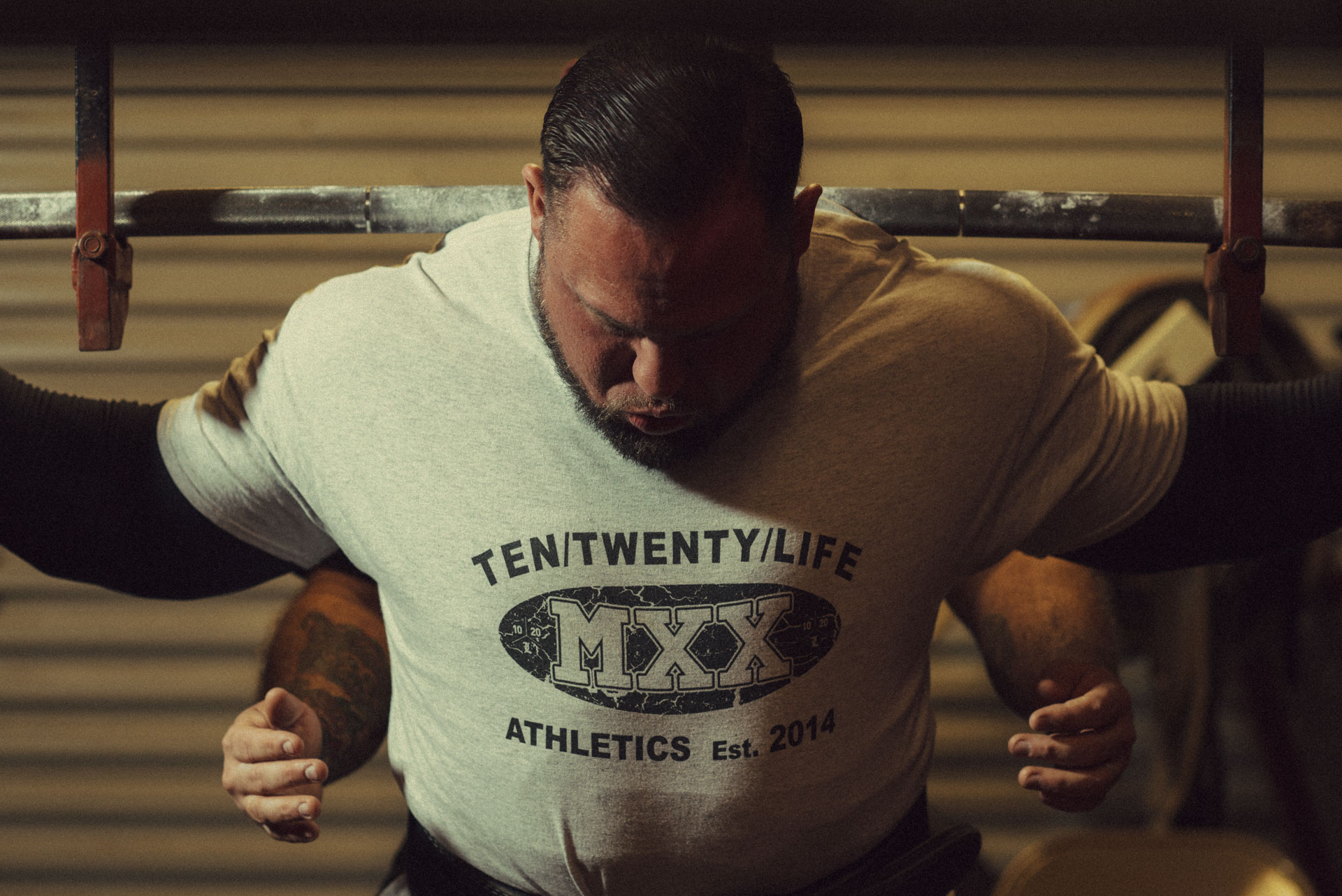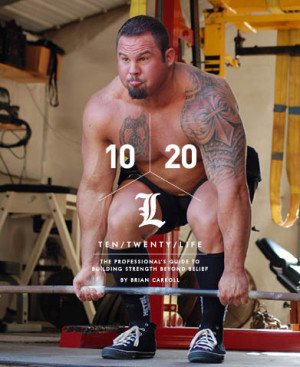
29 Apr Bulletproof Your Back: 10/20/Life and Dr. Stuart McGill (Part II)
By: Brian Carroll
After laying the groundwork and learning all about how to keep my back healthy, it was time to hear the plan to get my back healthy in the first place. Dr. McGill emphasized the fact that if he hadn’t already seen any athletes come back from the injuries I had, he would’ve told me to hang it up and do something else simply. I knew I was in some severe pain, but that’s when it hit home in terms of how severe my injuries were.
The idea, then, was to let my fractures heal and “callus”—and to do this, I was not to load my back with squats for at least three months. At that time, Dr. McGill told me I didn’t have very much left in my body. Everything was dependent on how my body responded to all the rehab and corrective work. I would either respond, or I wouldn’t.
Here are the various phases Dr. McGill proposed:
PHASE 1: No loading of the spine, and pristine movements all day, every day. This entailed squatting, lunging, and mostly doing a single-leg good morning or deadlift for any kind of downward movement—instead of bending at the waist a thousand times a day. I covered a lot of this yesterday in Part I of this series.
We then went over some direct core movements designed to tighten my pelvis. I was in pain from both walking and lifting. This was because my loose pelvis was causing more stress to be put on my back when I had any micro-movements.
Dr. McGill illustrated this by walking with me and squeezing my hips in two different places as we walked. This immediately—although temporarily—tightened my back, hips, and pelvis, and I felt much more support while I was moving.
These Phase 1 exercises were to be done every single day—and I want to stress here that these are the exercises he prescribed to me. This isn’t a one-size-fits-all scenario by any means. What might be an excellent exercise for me could be something that exacerbates your condition. With that said, here’s what he prescribed:
- Bird Dogs
- Rolling Planks
- McGill Crunch or Stir the Pot
- Asymmetric Carries (suitcase holds and bottoms-up kettlebell carry)
Dr. McGill also gave me some other customized things to do, and he cleared me to start doing pull-ups and push-ups. The plan by the end of Phase 1 was to desensitize the affected areas and get rid of all the pain. This phase was six weeks long, and it ended up working exactly how he said it would.
PHASE 2: Now that the pain was under control, the goal was to add in more movements to build on top of all the progress made on Phase 1.
First, we added the lifter’s wedge, done with the barbell on 4″ blocks. This is a slow and controlled movement and not an explosive one. For this whole period, I worked my hook grip like crazy to transition into deadlifting that way. The plan was to do this to avoid the shearing created by using an over/under grip.
Next, I did away with the “dive bomber” method of deadlifting. From here on, the idea was to be locked, loaded, and tight. Over the past few years, I’ve lost a lot of tightness because I haven’t been locking in my back. By using a hook grip and locking my back in the right way, I’ll be in much more robust and safer positions.
Finally, I added goblet squats, working from side to side in the bottom, to open up my hips while keeping my spine in a safe position. This, too, was kept slow and controlled.
PHASE 3: This was scheduled for three months after my initial assessment. At this point, I was supposed to be pain-free in doing my day-to-day stuff, and feeling my body getting stronger after giving everything sufficient time to heal. At this point, it’d be time for “the talk.”
“You need to decide,” said Dr. McGill, “if you’d rather be pain-free or get back on the platform and lift again.”
I told him my wife was okay with me resuming my career, and that if it was going to be possible to get my deadlift back, I was going to lift again. The secret here, he said, was to stick to the program and not be a knucklehead (in reality, I believe he said something even harsher than that).
The Takeaway
Dr. McGill hammered home the idea that I couldn’t afford to be sloppy at any time during my strength training phases. I knew my strength was going to come back very quickly, but the struggle here was staying patient and making sure all my movements were pristine. All my exercises, at first, were slow and controlled—and not explosive at all—with a premium placed on tightness. I knew my strength and speed would eventually come back, but I needed to learn how to do all the little things correctly first.
I knew, going in, that there was a chance that I wouldn’t make it back—that I would never be as strong again as I was. I was a realist because my back was f****d up, and although I was pretty much entrusting the rest of my career—and life, really—to Dr. McGill, I knew the deal going in.
Thankfully, it all worked.
Aside from my wife and my teammates, Dr. McGill was the reason I’m healthy again. The guy was gracious, helpful, and presented me with some incredibly innovative ways to both get rid of my pain and get my strength back. Meeting Dr. McGill and spending time with him has been a life-changing experience for me. He’s the best “back guy” in the world, he’s an absolute pleasure to sit and talk to, and the way he cares about others and their well-being are fantastic.
Dr. McGill is one of the most intelligent people I’ve ever met, but he’s also one of the most down-to-earth, fun guys I’ve known, too. His imprint is all over 10/20/Life, and for a good reason—he’s the best in the world at what he does. He’s also what makes 10/20/Life the most effective programming system I’ve ever seen or experienced.
If you ever have the chance to meet him or hear him speak, you’d be an idiot to miss it.
Grab the entire story told in Gift of Injury today!
Brian Carroll
Latest posts by Brian Carroll (see all)
- Quick Rant: Core Exercises - July 26, 2024
- Physical Therapy Fails for Back Pain - July 25, 2024
- Quick Rant: Physical Therapists - July 19, 2024






Sorry, the comment form is closed at this time.